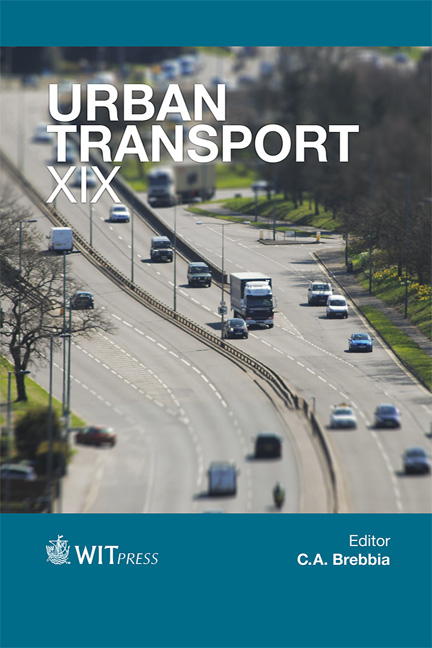Considering Sustainability In The Planning Of Transit Systems: Istanbul Case
Price
Free (open access)
Transaction
Volume
130
Pages
12
Page Range
423 - 434
Published
2013
Size
408 kb
Paper DOI
10.2495/UT130331
Copyright
WIT Press
Author(s)
B. Buran & O. Feyzioğlu
Abstract
Traditionally, minimization of the total travel time spent by the passenger in the system is the most preferred objective while planning transit systems. To satisfy this objective, forecasted travel demands between zones and characteristics of the available fleet are taken into account, and at the end of the planning process, optimum frequencies of each transit lines are identified. Unfortunately, this planning approach is not sufficient as the negative effects of the global warming are growing each day. Fossil fuels are the primary energy sources for transport systems and accordingly, the emission of the greenhouse gases especially carbon dioxide is accredited to this industry. Hence, it is impossible to ignore environmental requirements in the transit planning phase. In this study, we developed a bi-level and bi-objective optimization model to identify the optimum line frequencies. One of the objectives is to minimize the mean travel time of the passengers. The other objective is to minimize the total emission. A genetic algorithm is developed to solve this mathematical programming problem. A large instance related to Istanbul transit system involving 39 zones and 463 bus lines is solved with this solution method and results are elaborated. Keywords: sustainable transit planning, greenhouse gases emission, bi-level programming, genetic algorithm.
Keywords
Keywords: sustainable transit planning, greenhouse gases emission, bi-level programming, genetic algorithm.





